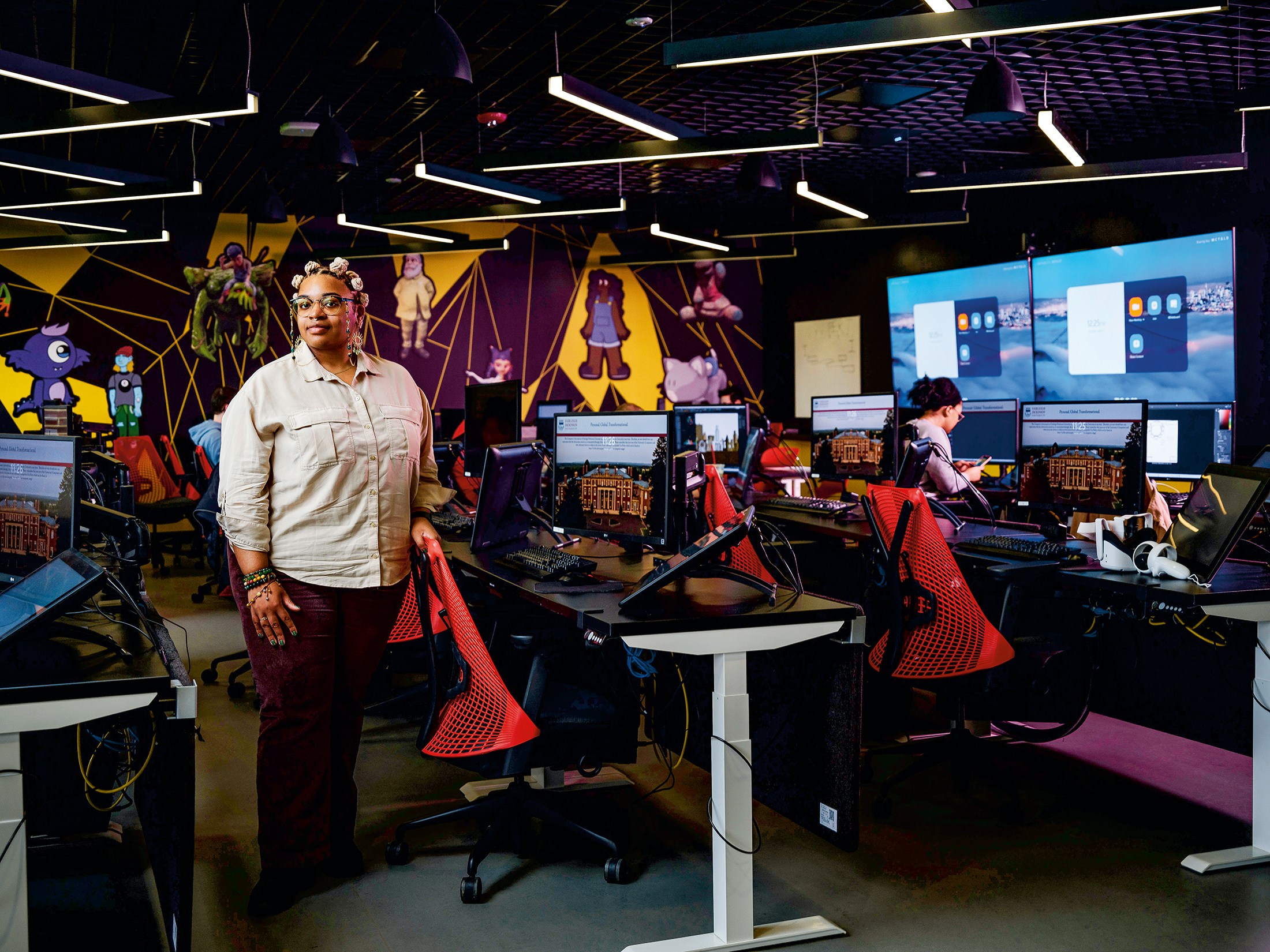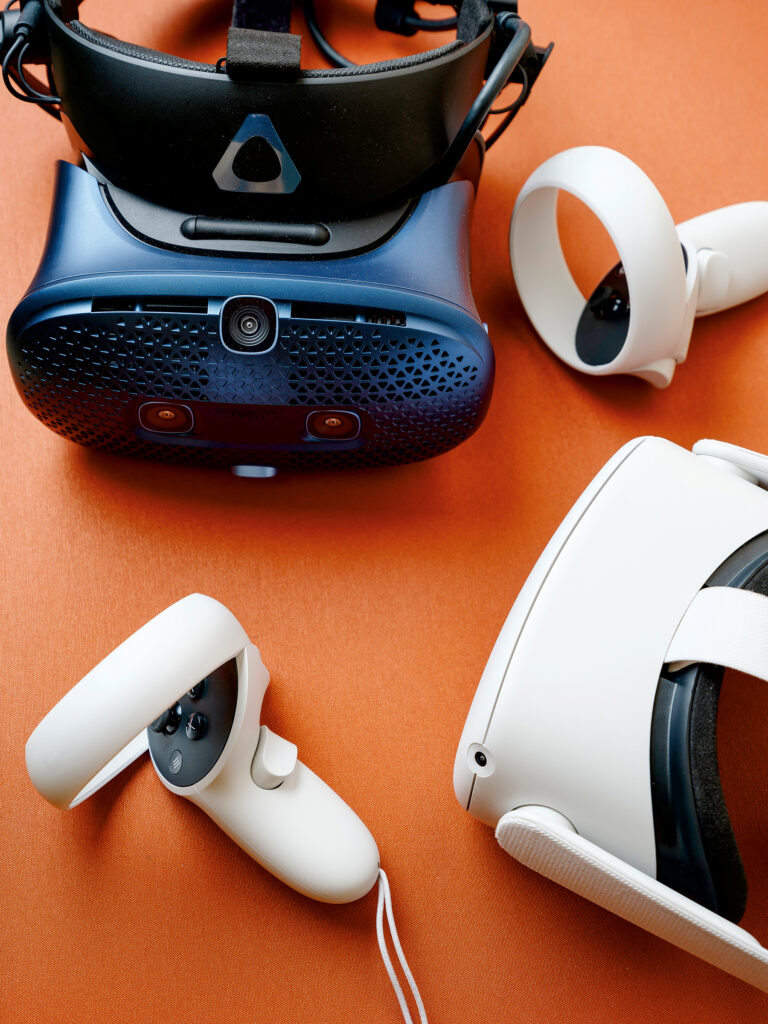What’s in Your Classroom?

Vaniah Howell in the Animation Lab on the Florham Campus. (Photo: Karsten Moran)
Sparking Creativity in the Animation Lab
Vaniah Howell, BA’20, MFA’22 (Flor)
Assistant Professor of Animation
“Art should be a joy, not a chore,” says Vaniah Howell, BA’20, MFA’22 (Flor), assistant professor of animation. And it’s a joy for Howell to teach Game Creation, 3D Modeling and more, in a lab built for creativity and productivity. To accommodate student needs, the lab is open 24 hours a day. “I’m so happy and proud to know our students love this space.”
Ergonomic Chairs
The design choices in the room — from ergonomic chairs to dimmable lights to standing desks — were made to enhance student capacity for creativity and learning. For instance, lighting can be adjusted to reduce screen glare so students can better see their digital projects; the ergonomic chairs offer comfortable spots for students who may need to spend long hours on a project. “The best animators use references and take feedback,” Howell says. “Animation takes time, and creators must be patient.”

Students can use VR equipment to test their animations. (Photo: Karsten Moran)
Drawing Pads
“Students use the Wacom Cintiq tablets to draw digitally, as if they were drawing on paper,” says Howell. Popular programs and apps include: ZBrush (for 3D sculpting), Adobe Animate CC (for 2D animation), Adobe Photoshop and Adobe Substance 3D Painter.
Screens and Whiteboard
“The screens are mostly used to provide demonstrations, critique projects or show videos. Professors teaching 2D courses and visual effects typically use the whiteboard to demonstrate timing animation or to visualize a concept. On one of the whiteboards, students love to doodle and draw,” Howell says.
Virtual Reality (VR) Headsets
“We have a dedicated course, Virtual Reality, for use of the Oculus Quest 2 and HTC Vive Pro headsets. Students can take the 3D environments they create in modeling and texturing programs and test them in the VR world,” says Howell. “It’s a wonderful experience!”